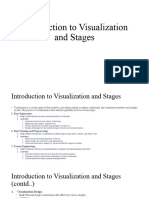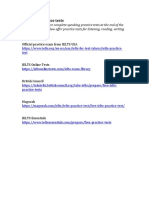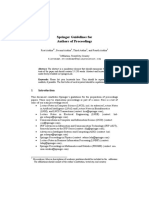0% found this document useful (0 votes)
24 views2 pagesCreating Visualizations
The document discusses the importance of visualizations in simplifying complex data and revealing hidden trends. It outlines key elements of effective visualizations, common types, and best practices for creating them. Additionally, it highlights tools for learning visualization skills, emphasizing that it is both a technical and creative skill that improves with practice.
Uploaded by
cabdullaahi sheekh yaxyeCopyright
© © All Rights Reserved
We take content rights seriously. If you suspect this is your content, claim it here.
Available Formats
Download as DOCX, PDF, TXT or read online on Scribd
0% found this document useful (0 votes)
24 views2 pagesCreating Visualizations
The document discusses the importance of visualizations in simplifying complex data and revealing hidden trends. It outlines key elements of effective visualizations, common types, and best practices for creating them. Additionally, it highlights tools for learning visualization skills, emphasizing that it is both a technical and creative skill that improves with practice.
Uploaded by
cabdullaahi sheekh yaxyeCopyright
© © All Rights Reserved
We take content rights seriously. If you suspect this is your content, claim it here.
Available Formats
Download as DOCX, PDF, TXT or read online on Scribd
/ 2




































































